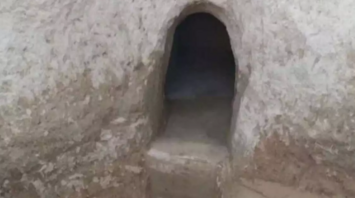In China, they have excavated 4300-year-old secret tunnels for "tactical defense." Photo

Archaeologists have unearthed a complex triple defense system and intricate network of tunnels in the ancient stone city of Houchengzui in Inner Mongolia, China. This archaeological marvel is believed to be approximately 4300 to 4500 years old.
Spread over a half-square mile, it is the largest and most powerful archaeological site in Inner Mongolia of the early Longshan period (3000-1900 BC), the Times of India reports.
Excavations, which began in 2005, revealed a complex triple defense system, including the main city wall, terraces, gate walls, ditches, and trenches. A recent initiative by the Institute of Archaeology of the Chinese Academy of Social Sciences (CASS) has revealed a new layer of defense - an elaborate system of tunnels under the city.

These ancient tunnels are believed to have served dual purposes. They were probably used both as a transportation network and as a means of defense and attack. With arched ceilings reminiscent of Longshan cave dwellings, the tunnels, measuring 3-6 feet in height and approximately 4 feet in width, are arranged radially, connecting to the center of the underground city.
The strategic design of the Houchengzui Stone City, with its elaborate defense systems and hidden tunnels, emphasizes its cultural significance for military defense, reflecting its role as a strategic stronghold.



















